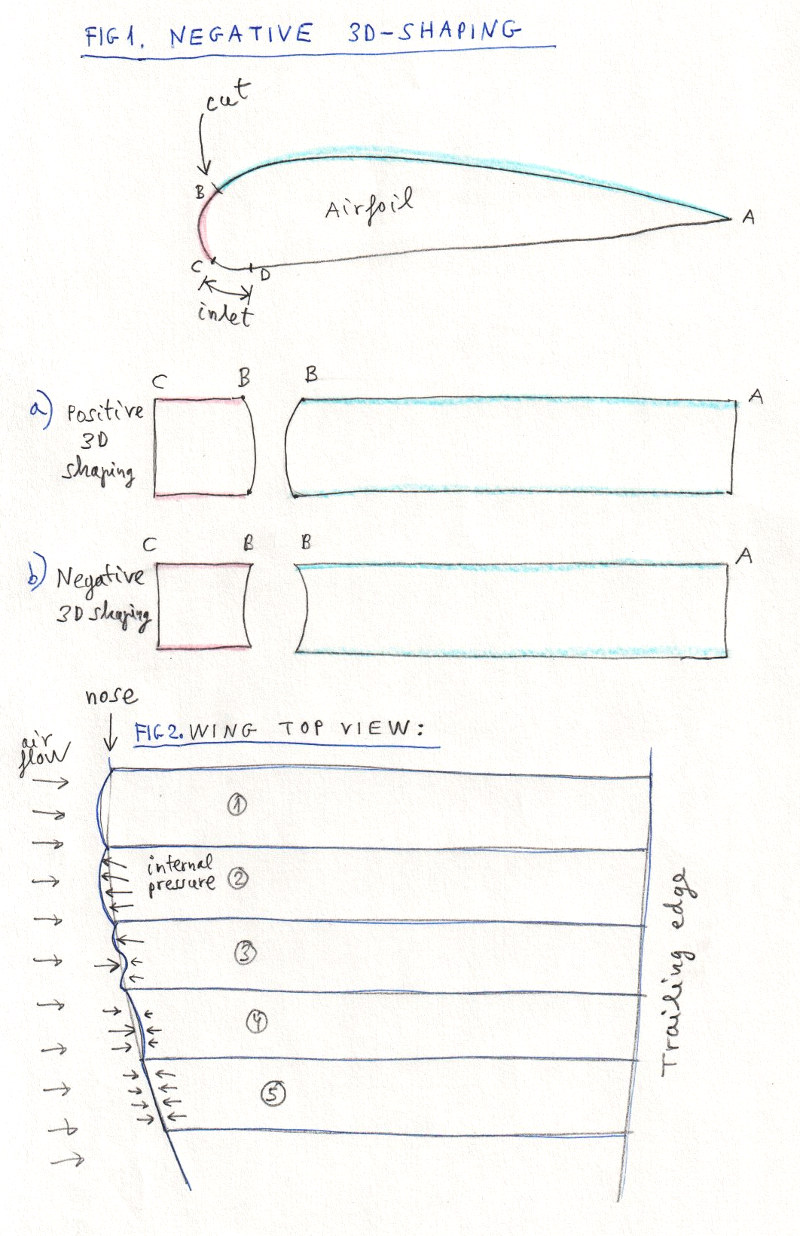PART 1: Notes on the 3D formation of the leading edge in a paraglider, using ripstop fabric.
PART 2: 3D-SHAPING PROGRAMMING ESTRATEGY
PART 3: Negative 3D-shaping
PART 4: A device for experimental study of deformations and wrinkles
In this PART 3 we continue studying the concept of 3D-shaping, focusing in the concept of negative 3D-shaping
The
concept of 3D-shaping has been detailed in the previous parts. The
general idea is to modify the lengths of the flat fabric panels, in one
or more directions, to fit the final 3D shapes. A flat panel will never
fit perfectly on curved surfaces in two directions, so we need to join
two or more panels and try to minimize the differences.
Let's see figures 1 and 2:
Figures 1 and 2: Negative 3D-shaping
In the previous sections we have talked about adding fabric in the
longitudinal direction to make a "positive" 3D-shaping that tries to
adapt to the oval shape of the profile in its central part when the
longitudinal curvature is high (Fig 1a). If the longitudinal curvature
is not high (cylindrical panel) then the tissue control is done
carefully only with skin tension.
But in some parts of the profile it may not be convenient to maintain
the ovalization. For example in the nose of the wing, where we can
assume that the flow of air impacts perpedicularly against the surface.
In Figure 2, we can imagine the top view of the wing:
- In cells 1 and 2 we can assume that the internal pressure is higher
than the outside in the nose area, and the panel is convex outwards.
- In cell 3 we can assume that the external pressure can exceed the
internal pressure, and then undesirable deformation can occur due to
the excess tissue.
- In cell 4 the external pressure exceeds the internal one and the panel is concave in shape.
- In cell 5 we can assume that the pressures are similar, there is no excess or lack of tissue and the shapes are smooth.
This leads us to think that in some areas it may be convenient to use a "negative" 3D-shaping, as shown in Figure 1b.
For this reason, and at the request of a paragliders developer and
constructor, we have added the negative 3D-shaping option from version
3.11 of the LEparagliding program. The option is very simple, the
coefficient that controls the depth of the 3D effect, instead of being
positive, can now also be negative, as explained in
the manual.
Another description of the concept of negative 3D-shaping is explained here (in German):
https://lu-glidz.blogspot.com/2019/06/leistungsdrang-25-negatives-3d-shaping.html


